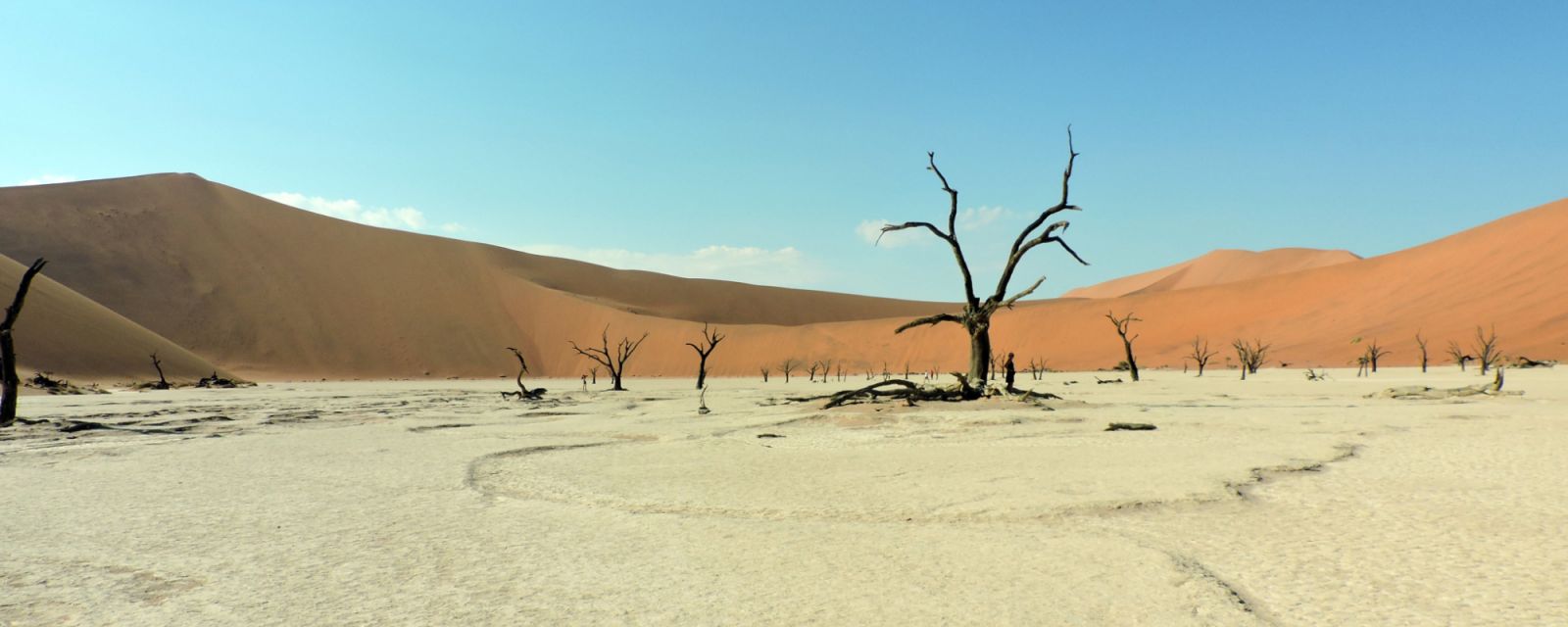Namibia, a desert wonder
Namibia boasts a variety of wildlife, breathtaking views and exquisite landscapes. It provides visitors with a strong cultural experience, has the world’s largest underground lake and its land surfaces are covered in a sea of red sand.
Popular among tourists for its bespoke safari camps and accessible wildlife, Namibia boasts the largest free-roaming population of black rhino and cheetah in the world and is the only country that has a growing population of free-roaming lions.
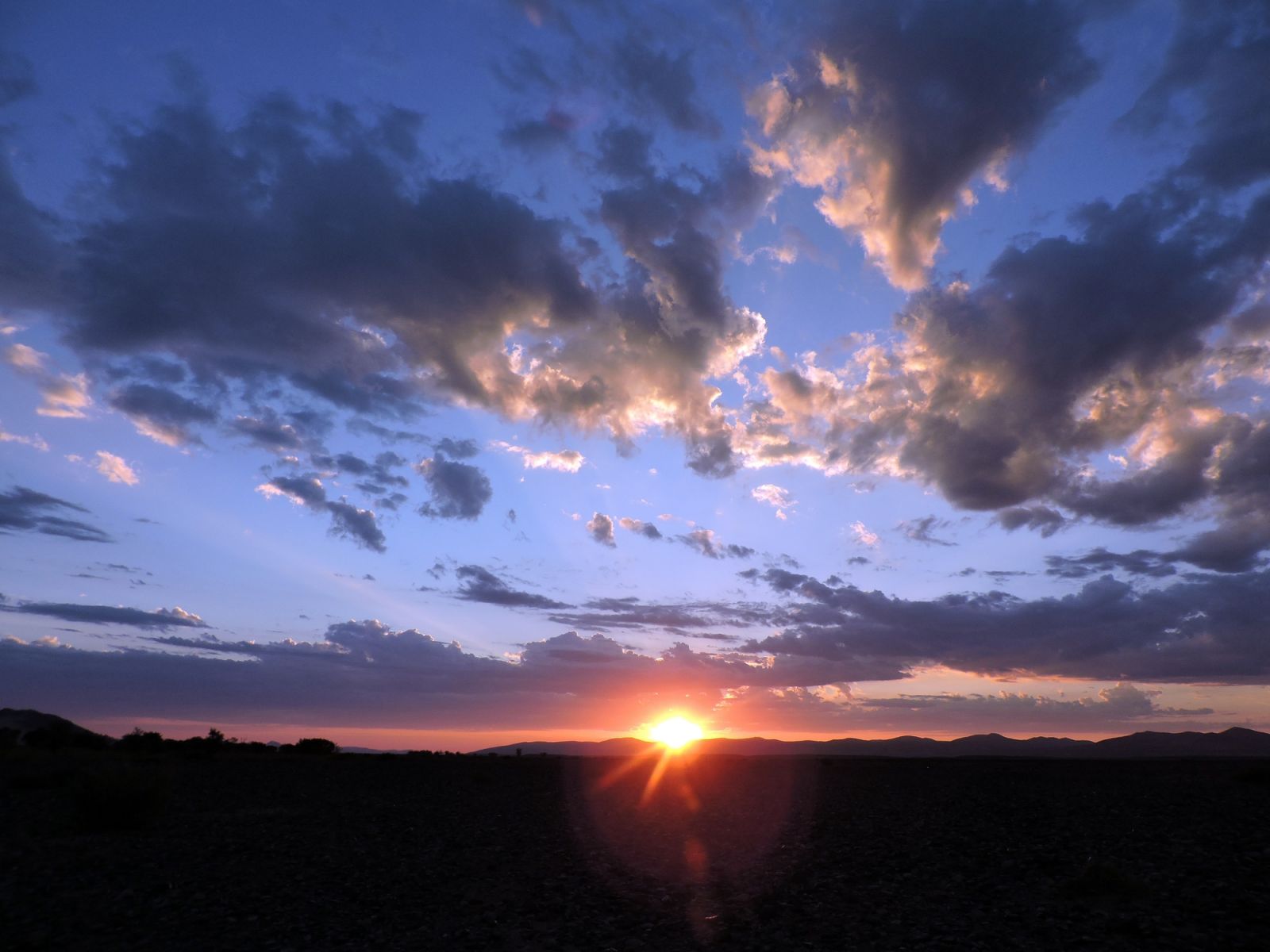
Enjoy the spectacular view of a Namibian sunset, while sipping on a glass of red wine.

The unmistakeable gemsbok (oryx) stands out amid the dunes of Sossusvlei.
The country’s elephant population grew by more than 100% between 1995 and 2008 and today numbers more than 16 000. This remarkable achievement has put Namibia in the world wildlife conservation spotlight.
The Etosha National Park, a top tourist destination and premier wildlife sanctuary, in the northern Kaokoveld region is populated by 114 large and small mammal species, in excess of 400 bird species, and reptiles. Etosha, “the place where no plants grow”, was once Lake Kunene, fed by the Kunene River which dried up, leaving behind a salt-pan system.
The /Ai-/Ais park is dominated by the Fish River Canyon, the world’s second-largest after the Grand Canyon. /Ai-/Ais (“burning water” in the local Nama language) refers to the sulphurous hot-water springs flanking the Fish River, and some of the world’s oldest rock art is also found here.
Sossusvlei in the Namib-Naukluft Park is where Namibia’s soaring red sand dunes may be seen, along with endemic gemsbok (oryx). The park is also dissected by a canyon at Sesriem, while windswept shipwrecks and ghost towns dot its icy Atlantic coast.
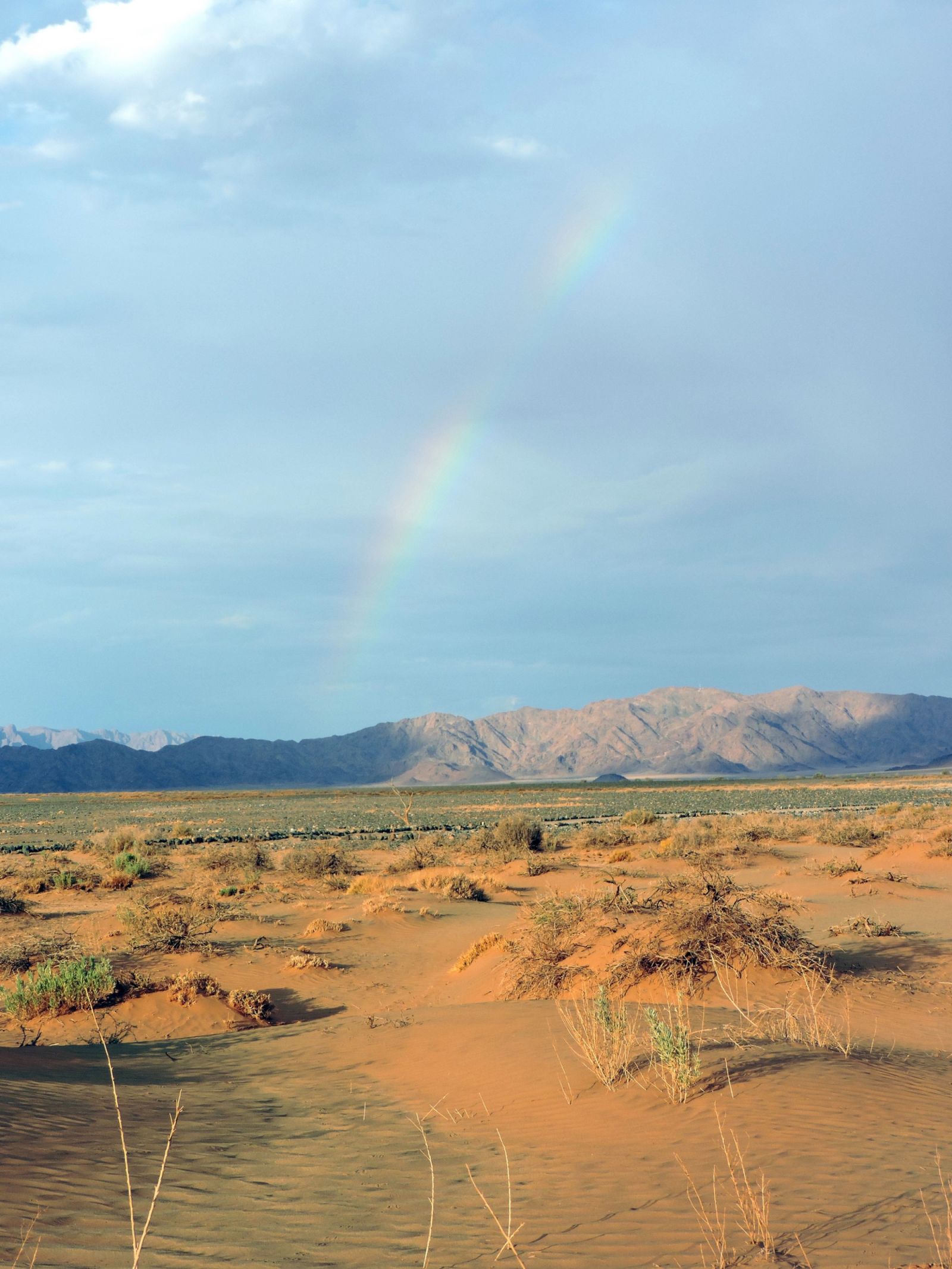
A rainbow in the heart of the desert.
Proclaimed in 1971, Skeleton Coast Park is a stretch of wilderness that extends over for 500km from the Ugab River in the south to the Kunene River in the north and about 40km inland. When the icy ocean winds meet the hot desert, a thick coastal fog is generated. This park is rich in more than 100 species of lichen and is home to specially adapted desert elephants, rhino and lion.
Other national parks and reserves in Namibia include Waterberg Plateau Park with its dinosaur footprints; Tsau Khaeb National Park, which is home to meteor craters, fossils and archaeological sites; Nkasa Rupara National Park, Namibia’s largest wetland; Mudumu National Park, the riverine habitat of the Kwando River and its elephants; Mangetti National Park; Khaudum National Park; the hot springs of Gross-Barmen; the fishing Mecca of Dorob National Park; Daan Viljoen Game Park; Cape Cross Seal Reserve and Bwabwata National Park, formerly established at the Caprivi Game Reserve in 1966.
Namibia’s capital, Windhoek, is located centrally and tourists typically fly in and use the city as a base from which to explore the rest of the country. Great distances separate Namibian towns and cities, and a large percentage of the population still lives rurally.
Swakopmund, on the Atlantic Ocean coast in the west, reflects the country’s German influence in colonial architecture such as the Christuskirche (1907).
Keetmanshoop is the rock-art capital of the southern Kharas region 550km south of the trendy, sidewalk cafes of Windhoek.
Close to the town are the other-worldly quiver-tree forests, while a mesosaurus fossil site is situated 42km to the north-east.
Namibia's urban centres are a blend of old and new. A people who are aspirant for the future but indelibly linked to a culture that dates back generations.
The government is democratic and stable one in which tourism is a valued commodity and wildlife conservation well entrenched. Today more than 43 percent of the country – including national parks and reserves, community forests and private reserves – is managed by more than 70 accredited conservation bodies.
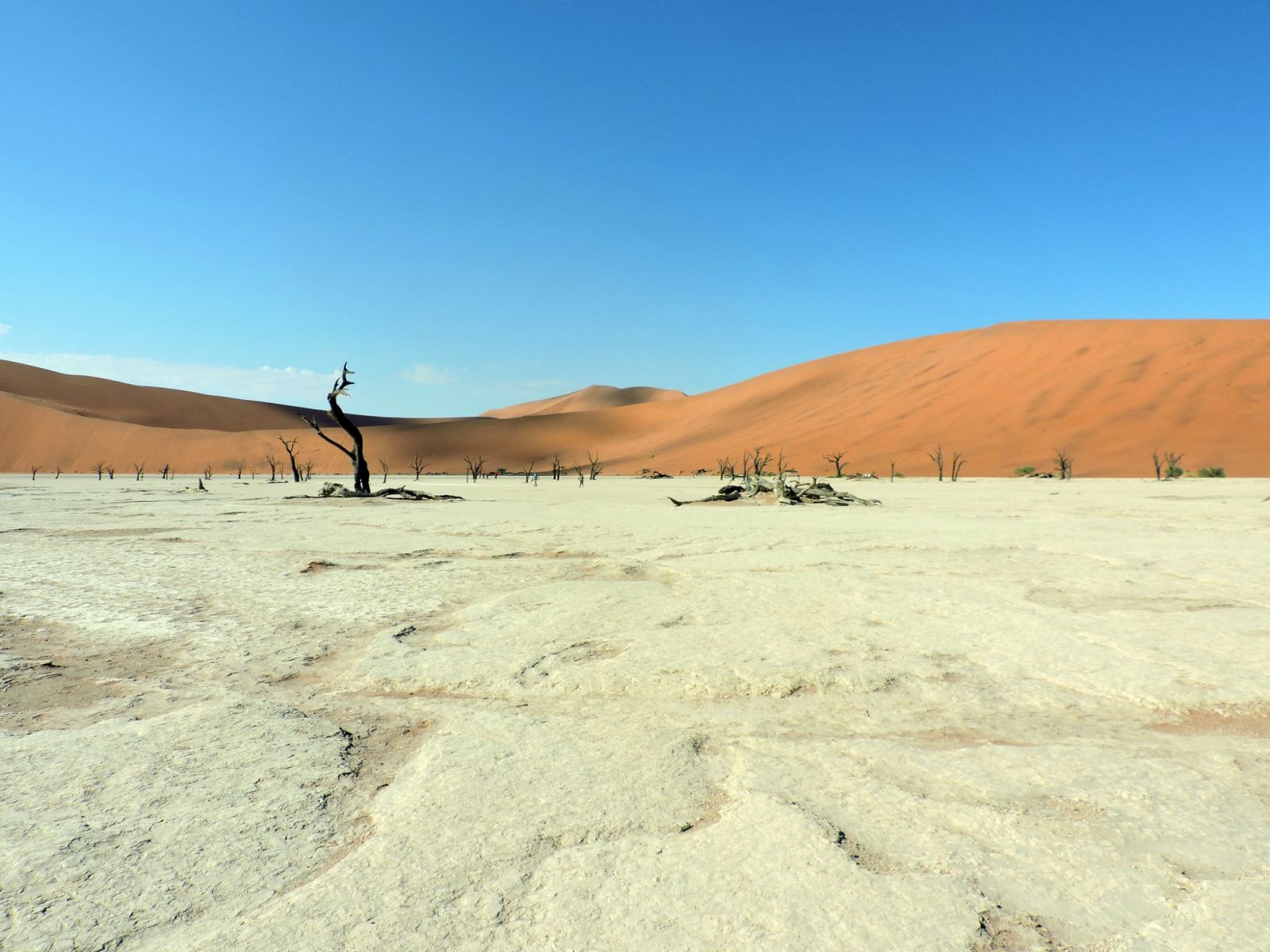
A must-see: the otherworldly Dead Vlei landscape.
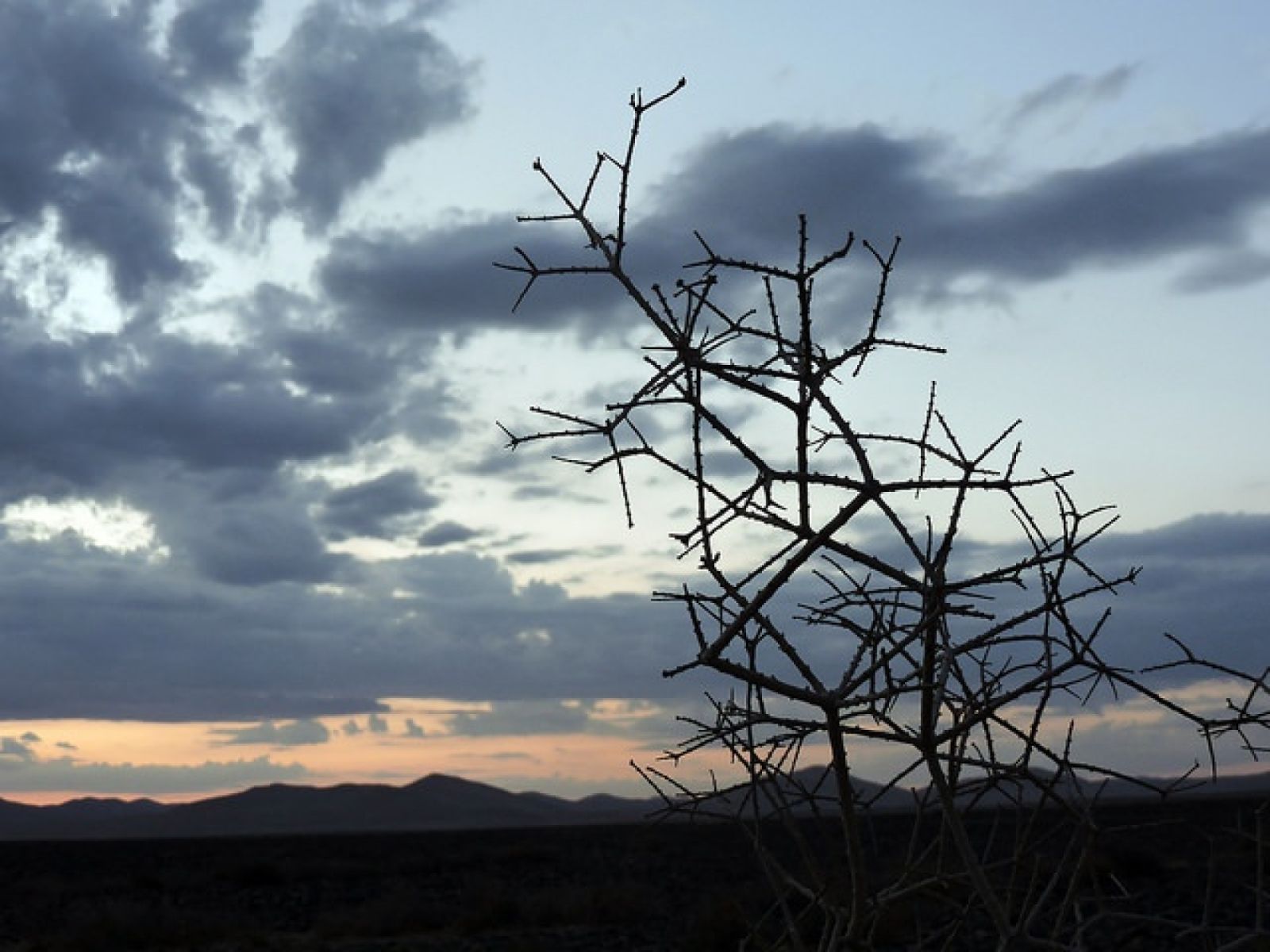
A thorn bush with geometric shapes at play.

Shades of blue and pink in a view that stretches as far as the eye can see.
